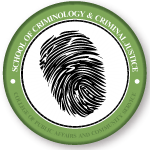Author ORCID Identifier
Document Type
Article
Publication Date
4-22-2019
Publication Title
Victims & Offenders
Volume
14
Issue
3
First Page
299
Last Page
321
Abstract
Views of people involved in the commercial sex trade have shifted. Once seen as prostitutes or “whores,” they are increasingly perceived as exploited “victims.” The behavior associated with commercial sex has been redefined from voluntary and disreputable to coerced and deserving of rescue. This new framework is part of a broader anti-trafficking movement in society to recognize and save vulnerable individuals who are exploited for sex. In this context, the model of problem-solving or specialty courts has been extended to sex trafficking cases. The goal first is to identify trafficking victims–also known as “victim-defendants”–and then to address their risk factors with services. The current review examines the prevalence and the effectiveness of sex trafficking courts. Although some promising evaluations have been conducted, it remains unclear whether such courts are addressing the unique needs of victim-defendants. Investigating this question is essential, given that trafficking courts are likely to grow in popularity and in number.
Recommended Citation
Kulig, T. C., & Butler, L. C. (2019). From “whores” to “victims”: The implementation of sex trafficking courts. Victims & Offenders, 14, 299–321. https://doi.org/10.1080/15564886.2019.1595242
Creative Commons License

This work is licensed under a Creative Commons Attribution-Noncommercial-No Derivative Works 4.0 License.


Comments
This is an Accepted Manuscript of an article published by Taylor & Francis in Victims & Offenders on April 22, 2019, available online: https://doi.org/10.1080/15564886.2019.1595242